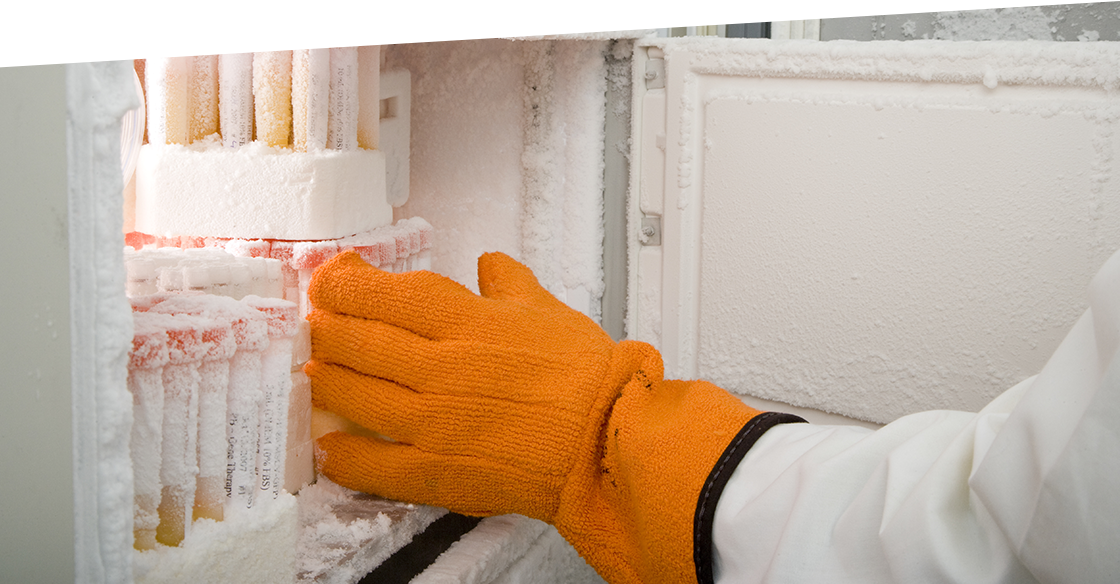
Laboratory freezers play an essential role in preserving and safeguarding research and assets. However, there's a common tendency among laboratories to prioritize the aftermath of a freezer failure.
Last updated: February 23, 2024
Preventing Freezer Failures
While navigating the consequences of failure is undeniably important, we would like to shift our attention to prevention – an essential yet challenging concept companies struggle to navigate. The difficulty arises from the myriad of solutions available and the variety of vendors presenting technologies that appear similar. In situations like these, it’s key to meticulously address the preventive measures that should be in place to avert asset loss, fully understanding their scope and implementation. It’s equally vital to recognize that the vulnerability of your equipment to failure poses a significant risk – one that could not only lead to financial losses in the millions but also severely hamper your research, particularly if critical assets are compromised.
In the following sections, we will review a freezer maintenance checklist, going into the considerations that go beyond mere box-ticking and incorporating advice and expertise from the XiltriX SafetyNet Team. With over 30 years of monitoring experience, the SafetyNet team has meticulously developed a comprehensive guide to assist users in the life science industry in safeguarding against freezer malfunctions and minimizing potential asset losses. Additionally, we'll explore the importance of understanding human responses during crises, ensuring that your lab personnel are better prepared to navigate such situations.
What To Do Before Freezer Failure
The first line of defense against freezer failure is a monitoring system. The second one is establishing a monthly preventative maintenance routine. To make this simple, we created a comprehensive template with detailed explanations designed to be a valuable reference for maintaining these practices.
Freezer Maintenance Checklist
- Check for ice build-up: Ice accumulation can lead to freezer malfunction, prevent cooling, and jeopardize sample integrity.
- Change filter: Clean filters to ensure freezer efficiency, temperature control, and avoid clogged airflow.
- Inspect door seal: A proper seal with no obstructions is essential for maintaining temperature and preventing asset contamination.
- Check ambient conditions: Evaluate ambient conditions to identify any units potentially at risk.
- Leverage data: Use data analysis to detect issues. Interpreting temperature graphs and comparing them to external conditions can help predict equipment failure.
- Implement training: Ensure ongoing training and support are part of your Environmental Monitoring System (EMS) without extra costs, including for new staff, to maintain operational consistency despite staff changes.
Psychology of Crisis During Freezer Failure
During a crisis, the common response from most users tends to be one of panic and uncertainty — “I don’t know what to do…Maybe I’ll check tomorrow…There’s nothing I can do…”
The Centers for Disease Control and Prevention (CDC) released a study that dissects the psychology of a crisis, and the results are a true representation of the behavior we’ve noticed customers adopt during equipment failure. People going through a crisis tend to:
- Not hear or ignore information
- Are unable to juggle multiple facts at a time
- Remember less information than usual
- Misinterpret confusing action messages
It has been proven that “people want messages confirmed before taking action.” It’s no surprise that users in the lab are more likely to take the right action if they speak to a credible source during a crisis. The value of live agent support is of the essence when users encounter alarms and struggle to interpret them accurately.
What To Do During a Freezer Failure Alarm
When confronted with a freezer failure alarm, it’s key to pivot towards quick and informed action. Even if you’re dealing with the best-trained lab personnel, that doesn’t mean they will respond accordingly. Issues in the lab and potential mistakes are exacerbated when more personnel are involved.
Having a team of 24/7 live monitoring agents to act as an extension of your team can provide invaluable support, helping your team navigate the crisis effectively. With that in mind, it’s important to consider these precautions during the alarm:
- Understand alarms: During an active alarm, even well-trained staff can second guess themselves and not get the full sense of the situation. Having an "emergency expert" available to speak with can help employees decipher what the alarm means.
- Don’t trust display data: Relying on your display data is not reliable and gives you a false sense of security. Assess the temperature trends instead.
- Transfer assets to backup units: If available, transfer assets to backup units to mitigate potential losses. Make sure you’re aware of where those backup units are.
- Contact support: When people face an emergency they’ve not experienced before, they might not be able to make sense of it. Support will guide you throughout the alarm, keep you updated, and provide data.
What To Do After a Freezer Failure
Following a freezer failure, a post-event analysis is crucial to both understand the root cause and prepare for future incidents. It’s important to take into account the following aspects:- Understand the problem: People are the source of most issues, from misinterpreting alarms to neglecting systems, even the best technology can't fix it.
- Evaluate SOPs again: Assess individual actions during the event and fix processes based on insights you learned from reviewing the data and logs from your EMS.
- Clarify roles and responsibilities: Identify who is in charge of monitoring the lab, and establish who is authorized and trained to handle freezers and move assets.
- Educate: Turn the event into an educational opportunity. Your EMS vendor should provide expert advice as they’ve seen it all before.
- Schedule regular maintenance: Make sure all of the units have regular maintenance schedules. Analyzing trends of your units can show which units may require servicing sooner than planned.
